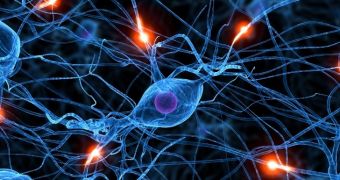A new paper published in a recent issue of the journal Nature documents the use of optical pulses to erase and then reactivate specific memories in rats and thus influence their behavior when confronted with specific stimuli.
The scientists who worked on this research project explain that they started their series of experiments by creating a memory, Science Daily informs.
Namely, they stimulated specific nerves inside the rodents' brain and caused the animals to experience electrical shocks in one of their feet at the same time.
In time, the rats learned to associate the optical stimulation of the set of nerves the researchers focused on with pain and showed signs of being afraid when these nerves were stimulated.
As detailed in the paper, the rodents came to be afraid and act accordingly even when no electrical shocks were delivered and the set of nerves alone was targeted.
The next step was getting them to disassociate the stimulation of these nerves in their brain with a potential electrical shock and rewire their brain in such ways that they would no longer be afraid when the nerves were stimulated.
This was achieved with the help of optical pulses emitted at frequencies previously documented to weaken or strengthen existing connections between nerve cells and thus alter memories and, consequently, reactions to past events.
What's interesting is that, after getting the rats to forget all about how stimulation of a specific group of nerves went hand in hand with electrical shocks, the scientists were able to once again use optical pulses to reactivate this association.
Simply put, what the University of California, San Diego School of Medicine specialists who worked on this investigation achieved was to create a memory, erase it, and then reactivate it simply by toying with connections between nerves inside the animals' brain.
“We can cause an animal to have fear and then not have fear and then to have fear again by stimulating the nerves at frequencies that strengthen or weaken the synapses,” explains specialist Sadegh Nabavi.
“We can form a memory, erase that memory and we can reactivate it, at will, by applying a stimulus that selectively strengthens or weakens synaptic connections,” adds study senior author Roberto Malinow, MD, PhD, professor of neurosciences.
It is believed that, in time, the outcome of this series of experiments could help scientists reach a better understanding of medical conditions such as Alzheimer's and maybe even deliver better treatment options.

 14 DAY TRIAL //
14 DAY TRIAL //